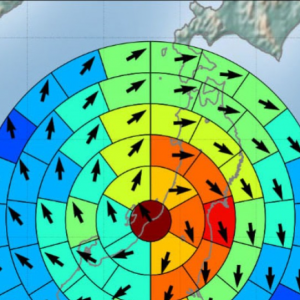Title: How to Determine Typhoon Risk in Your Japanese Region
In a world where information is just a click away, understanding the potential risks posed by typhoons in your specific region of Japan has never been more critical. When it comes to the safety and well-being of yourself and your loved ones, knowledge is power. In this comprehensive guide, we’ll walk you through the essential steps to ascertain if your area in Japan is at risk during a typhoon.
Understanding Typhoons in Japan

Before we dive into the specifics of assessing risk, let’s establish a foundational understanding of typhoons in Japan. Typhoons are powerful tropical cyclones that can wreak havoc with their strong winds, heavy rainfall, and potential for flooding. Japan is no stranger to these natural phenomena, as it experiences a significant number of typhoons each year, primarily between May and October.
Gathering Local Information

When it comes to assessing typhoon risk in your area, local information is your best ally. Local government agencies, meteorological organizations, and news outlets provide valuable resources to help you stay informed. Pay close attention to:
- Japan Meteorological Agency (JMA): The JMA is your go-to source for up-to-date typhoon tracking and forecasting. They provide detailed information on typhoon trajectories, wind speeds, and rainfall predictions specific to your region.
- Local News and Alerts: Stay tuned to local news channels and weather apps for timely alerts and emergency information. Local authorities often issue evacuation orders or advisories to ensure public safety.
- Community Forums and Social Media: Join online communities or social media groups dedicated to your region. Local residents often share real-time updates, personal experiences, and advice during typhoon events.
- Official Government Websites: Check your local government’s website for disaster preparedness guidelines, evacuation routes, and shelter locations.
Interactive Maps and Resources

Embracing technology can significantly enhance your ability to gauge typhoon risk in your area. Utilize interactive maps and resources to stay ahead of the curve:
- Typhoon Tracking Websites: Websites like the JMA provide interactive typhoon tracking maps. These maps allow you to visualize a typhoon’s path and its proximity to your region.
- Rainfall Prediction Tools: Some websites offer rainfall prediction tools that help you estimate potential flooding risks. By inputting your location, you can assess how much rainfall your area might receive during a typhoon.
- Emergency Apps: Download emergency apps that provide real-time alerts and updates, including information on evacuation orders and available shelters.
Community Engagement and Preparedness

Now that you have access to valuable information, it’s crucial to engage with your community and prepare accordingly:
- Community Meetings: Attend local community meetings or workshops on disaster preparedness. These gatherings offer an opportunity to connect with neighbors, discuss evacuation plans, and share resources.
- Emergency Kits: Prepare an emergency kit that includes essential supplies such as non-perishable food, water, flashlights, batteries, and first-aid supplies.
- Evacuation Routes: Familiarize yourself with evacuation routes and transportation options in your area. Ensure that all family members know the plan and have a designated meeting point.
- Stay Informed: Continue to monitor updates from reliable sources as the typhoon approaches. Follow evacuation orders promptly to ensure your safety.
Conclusion

In the face of a typhoon, your safety and that of your loved ones should always be the top priority. By staying informed, utilizing local resources, and actively engaging with your community, you can better assess the risk to your area during a typhoon and take appropriate measures to protect yourself and your family.
Key words
- jobs in japan 2024
- living in japan 2024
- what should do in japan 2024
- tour around japan 2024

No Responses